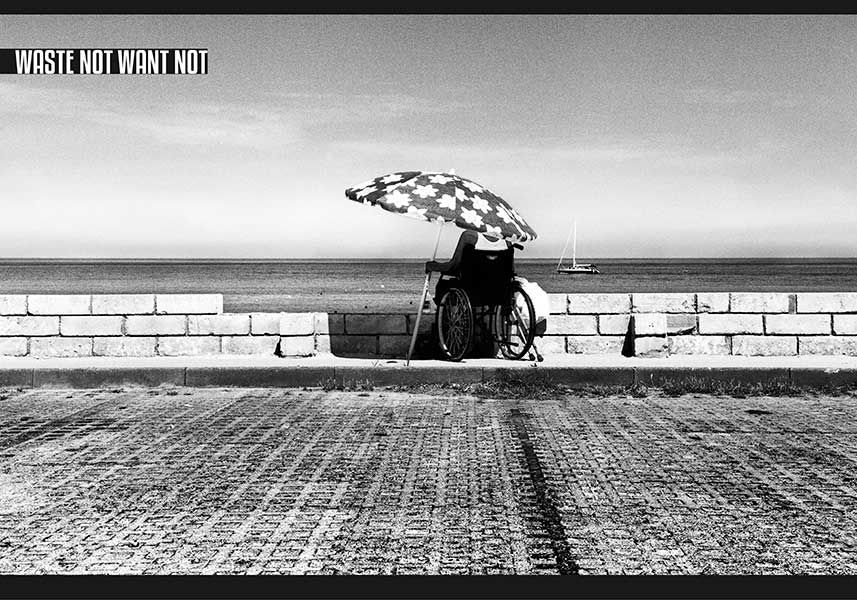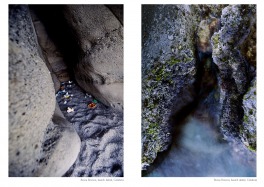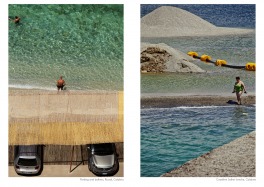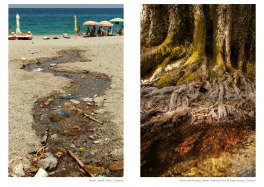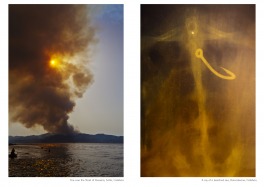Giada Connestari, photographe et pilote de drone environmental photography
Calabria Year Zero, ITALY
Calabria is a region situated in South-Italy. 741 km of coast in the Mediterranean and barren mountains surrounding the inner lands. Beautiful natural resources that make the region one of the most isolated of the country.
“When I arrived here for the first time 30 years ago – say a middle age men from the northeast Italy – I thought I was discovering Africa. Dirt roads glided into the sea and the shoreline was pristine and wild. I literally fell in love with this place and I bought a small apartment here. Now, I am unable to sell it ” he concludes sadly, looking around as to show what appear like an evidence. The coast was disfigured by a sequestered resort. We stood in a cement wharf quite collapsed into the sea, the beach full of garbage. We could only imagine this place as a place of overflowing beauty but what we could see was only the remain of an extraordinary landscape sottish by the hand of men.
A scenario that it is repeated along the entire Calabria coastline. Wherever I went, I found stories of abuse, corruption, real estate speculation. “Investors use old cadastral maps showing a different coastline in order to build bar-restaurants, private houses, touristic resorts and car parks as near as they can from the seaboard. Sometime the old cadastral maps, showing the largest coast of the past, are even unnecessarily, as they obtain special permissions to bypass the national laws about landscape and coastal protection” explain Franco Saragò, Legambiente representative in the municipality of Ricadi.
We can expected that all these investments ensure an high level of economic development and tourism infrastructures: it isn’t. Investments seem much more the result of a wild speculation than of an economic and urban development plan. An high number of touristic resort are unfinished, sequestered by the police or closed for irregularities, standing like empty cement bloc in the middle of beautiful landscapes. Large pieces of forest are destroyed by arson, waiting that the land once protected by environmental constraints will be declared buildable.
The cultural identity and the traditional economic activities, so strictly connected to breeding and fisheries, little by little are forgotten because of the disruption of land and natural resources.
“ When I was a boy – tells Giovanni Malara, from the CABS – Punta Pellaro was an extraordinary dune where birds stopped to restore during the migration towards Africa. It was a unique site, situated into the extreme southeast point of Italy, facing Sicily. Today, instead of the dune there is a fake tourist village, 47 squalid terraced houses that have been sequestered while the nearby mouth of the Fiumarella creek has become an open dump ”.
The issue of illegal dump affect seriously the Calabria shoreline, considered one of the most polluted of Italy. Although banned by the EU in 1991, even today, more than 90 municipalities drain the waste water directly into the sea without being treated (Legambiente, 2013).
Between urbanization abuse, neglect, illegality and environmental degradation, among skeletons of tourist villages and never reclaimed industrial structures, the region’s economic growth is compromised.
Nowadays, Calabria in one of the poorest regions of Italy and holds one of the Europe highest rate of youth unemployment (Istat; Eurostat 2013).
Click_here_to download PDF
23 juin 2013 | Filed under REPORTAGES PRESSE and tagged with beach, degraded landscapes, italy, littoral, Mass tourism, Mediterranean, planetary boundary, soil erosion, waste discharges, Water pollution.
Étiquettes : beach, degraded landscapes, italy, littoral, Mass tourism, Mediterranean, planetary boundary, soil erosion, waste discharges, Water pollution
ARCHIVIO
- mai 2021 (1)
- octobre 2020 (1)
- août 2020 (1)
- juillet 2020 (1)
- mai 2020 (1)
- avril 2020 (2)
- mars 2020 (1)
- février 2019 (1)
- janvier 2019 (3)
- octobre 2017 (2)
- septembre 2016 (1)
- août 2016 (1)
- juin 2014 (2)
- mai 2014 (1)
- avril 2014 (1)
- mars 2014 (1)
- décembre 2013 (1)
- novembre 2013 (1)
- octobre 2013 (1)
- septembre 2013 (1)
- juillet 2013 (1)
- juin 2013 (1)
- avril 2013 (1)
- mars 2013 (1)
- février 2013 (1)
- décembre 2011 (1)
- mars 2010 (1)
- avril 2008 (1)
CERCA
Powered by WordPress using the F8 Lite Theme
subscribe to posts or subscribe to comments
All content © 2025 by Giada Connestari, photographe et pilote de drone
Connexion
